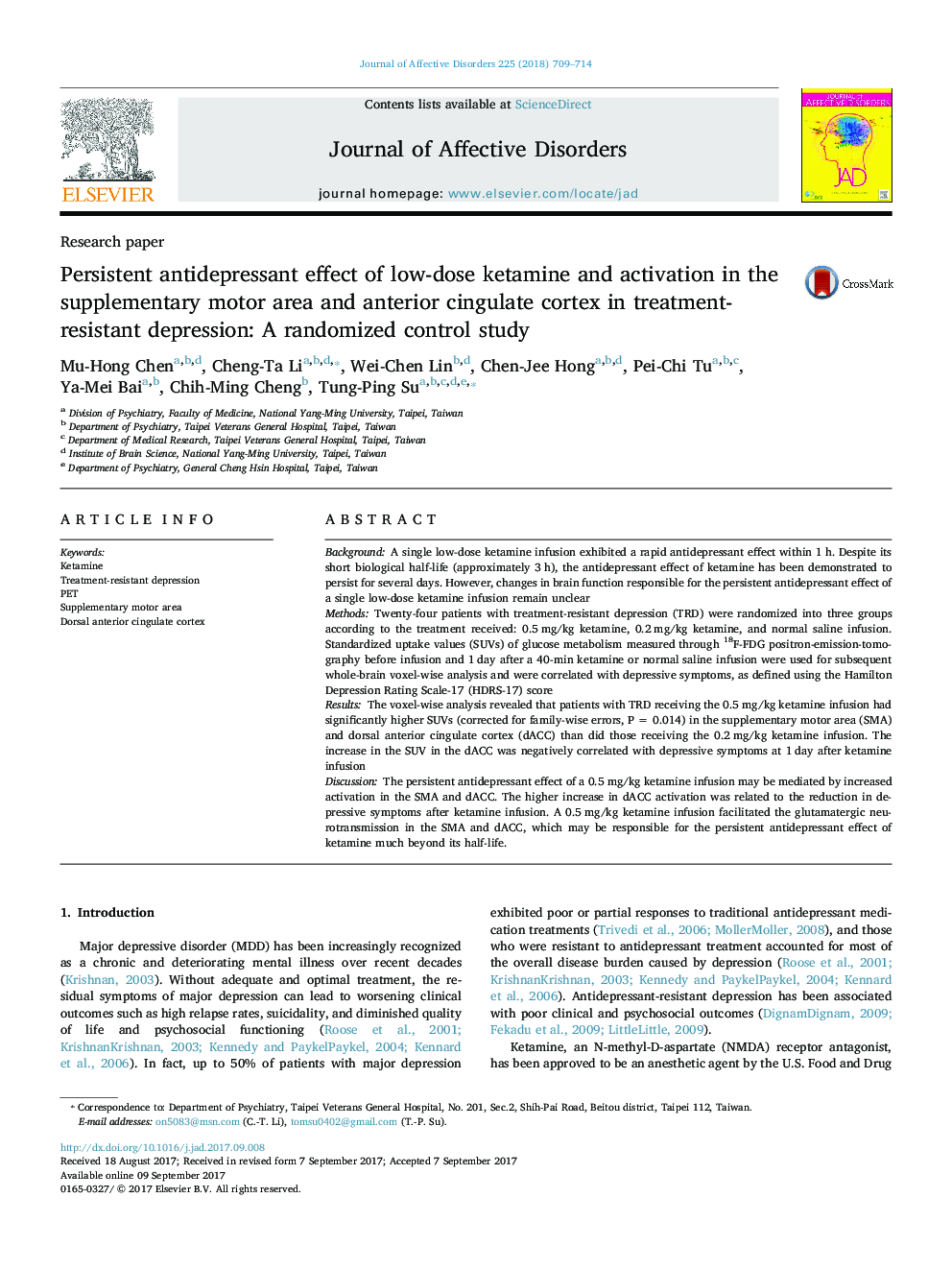| Article ID | Journal | Published Year | Pages | File Type |
|---|---|---|---|---|
| 5721780 | Journal of Affective Disorders | 2018 | 6 Pages |
â¢The persistent antidepressant effect of a low-dose ketamine infusion was mediated by increased activation in the SMA and dACC.â¢The higher increase in dACC activation was related to the reduction in depressive symptoms after ketamine infusion.â¢A single optimal low-dose ketamine infusion facilitated the glutamatergic neurotransmission in the SMA and dACC.
BackgroundA single low-dose ketamine infusion exhibited a rapid antidepressant effect within 1Â h. Despite its short biological half-life (approximately 3Â h), the antidepressant effect of ketamine has been demonstrated to persist for several days. However, changes in brain function responsible for the persistent antidepressant effect of a single low-dose ketamine infusion remain unclearMethodsTwenty-four patients with treatment-resistant depression (TRD) were randomized into three groups according to the treatment received: 0.5Â mg/kg ketamine, 0.2Â mg/kg ketamine, and normal saline infusion. Standardized uptake values (SUVs) of glucose metabolism measured through 18F-FDG positron-emission-tomography before infusion and 1Â day after a 40-min ketamine or normal saline infusion were used for subsequent whole-brain voxel-wise analysis and were correlated with depressive symptoms, as defined using the Hamilton Depression Rating Scale-17 (HDRS-17) scoreResultsThe voxel-wise analysis revealed that patients with TRD receiving the 0.5Â mg/kg ketamine infusion had significantly higher SUVs (corrected for family-wise errors, P = 0.014) in the supplementary motor area (SMA) and dorsal anterior cingulate cortex (dACC) than did those receiving the 0.2Â mg/kg ketamine infusion. The increase in the SUV in the dACC was negatively correlated with depressive symptoms at 1Â day after ketamine infusionDiscussionThe persistent antidepressant effect of a 0.5Â mg/kg ketamine infusion may be mediated by increased activation in the SMA and dACC. The higher increase in dACC activation was related to the reduction in depressive symptoms after ketamine infusion. A 0.5Â mg/kg ketamine infusion facilitated the glutamatergic neurotransmission in the SMA and dACC, which may be responsible for the persistent antidepressant effect of ketamine much beyond its half-life.
